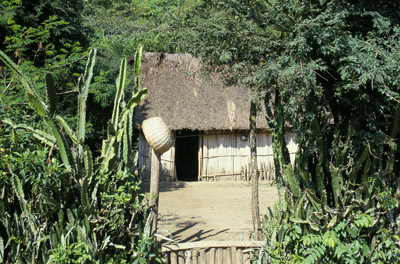Helping Indigenous Communities in Nicaragua Manage Forest Resources

Summary
The Government of Nicaragua (GoN) supports indigenous communities in the Northern Atlantic and Southern Atlantic Autonomous Regions (RAAN and RAAS) in their efforts to take ownership and manage their own forest resources---a policy that helps reduce poverty in the communities while also fighting ecological degradation. Although the Nicaraguan authorities have created a community forestry strategy, sector and regional forestry institutions had little or no experience implementing such an ambitious model. The GoN wanted help to improve the knowledge of community forest management among Nicaraguan indigenous communities and forest sector institutions working in RAAN and RAAS. In response, the World Bank organized a South-South Trust Fund Facility-funded knowledge exchange to bring leaders of indigenous forest communities and institutions together with their Mexican counterparts.
Nicaraguan indigenous communities in the RAAN and RAAS were able to learn from the experience of two communities practicing Community Forestry (CF) in Oaxaca, Mexico. This contact with the Mexican indigenous communities increased the Nicaraguan participants’ motivation, introduced them to new ideas, and helped them understand the requirements for building successful CF. Before the exchange, only six indigenous communities in RAAN and RAAS had experience with Community Forest Management. Now, 16 Indigenous communities are participating in nationally coordinated CF programs.
“The knowledge exchange showed indigenous communities a sustainable way of implementing community forestry and organizing themselves,” said Enrique Pantoja, a Senior Land Administration Specialist with the World Bank, who was instrumental in organizing the exchange.
The exchange also established a network for long-term cooperation among public forest sector institutions in Nicaragua and Mexico and contributed to strengthening Nicaragua's National Forest Program, including key forestry institutions such as the National Forest Institute (INAFOR).
Beneficiaries / Participants
Managing forest resources is a key element of development and poverty alleviation in the Northern Atlantic and Southern Atlantic Autonomous Regions (RAAN and RAAS) of Nicaragua, which contain 78 percent of the country’s forests. They comprise of more than 15 indigenous territories with about 150 ethnic communities, including Miskito, Mayangna, Creole, and Garifuna.
Nicaragua’s National Forest Institute (INAFOR) has been implementing a National Forest Program (NFP) with Community Forestry (CF) as a main initiative. Although Nicaraguan authorities had developed a community forestry (CF) strategy, neither sector nor regional autonomous institutions had much or any experience in implementing such a broad model. Furthermore, indigenous leaders and communities needed to better understand the challenges and opportunities involved in creating new CF enterprises, especially in areas devastated by Hurricane Felix in September 2007.
In Mexico, community organizations use participatory planning, collective decision making, strong accountability, and traditional community volunteering mechanisms to promote community forestry. CF businesses in Mexico generate revenue and employment and use products made locally to contribute to social development. Mexico’s National Forestry Commission (CONAFOR) maintains a culturally sensitive relationship and dialogue with the communities to coordinate these activities.
To improve practical knowledge on community forest management among Nicaraguan indigenous communities and forest sector institutions working in RAAN and RAAS, the World Bank organized a knowledge exchange funded by the South-South Trust Fund Facility to bring leaders of indigenous forest communities and institutions together with leaders of Mexican forestry institutions and indigenous communities in the biologically diverse areas near Oaxaca, Mexico.
Moving forward
The ultimate purpose of the exchange was to decrease poverty by improving the social capital in the targeted indigenous communities, and by helping them take charge of local community forestry. To ensure local ownership and sustainability, the knowledge exchange team prepared and implemented activities in coordination with the sectoral and the RAAN/RAAS authorities that are implementing Nicaragua’s national community forestry strategy. This will help increase the chances that the project will be replicated in other communities in other countries in the region. The reports and dissemination materials will be used in other training activities in RAAN/RAAS and other regions in Nicaragua.
The grant complemented the ongoing IDA-financed Hurricane Felix Emergency Response Project (HFERP), which is supporting reconstruction of roofs, houses, and community buildings in the coastal indigenous communities affected by the Hurricane. While HFERP does not directly support RAAN forest sector development, most indigenous communities own the downed timber to be used in reconstruction activities and are benefiting from the government’s support of sustainable community forestry management.

 China
China Colombia
Colombia Denmark
Denmark India
India Indonesia
Indonesia Mexico
Mexico Russian Federation
Russian Federation Spain
Spain United Kingdom
United Kingdom